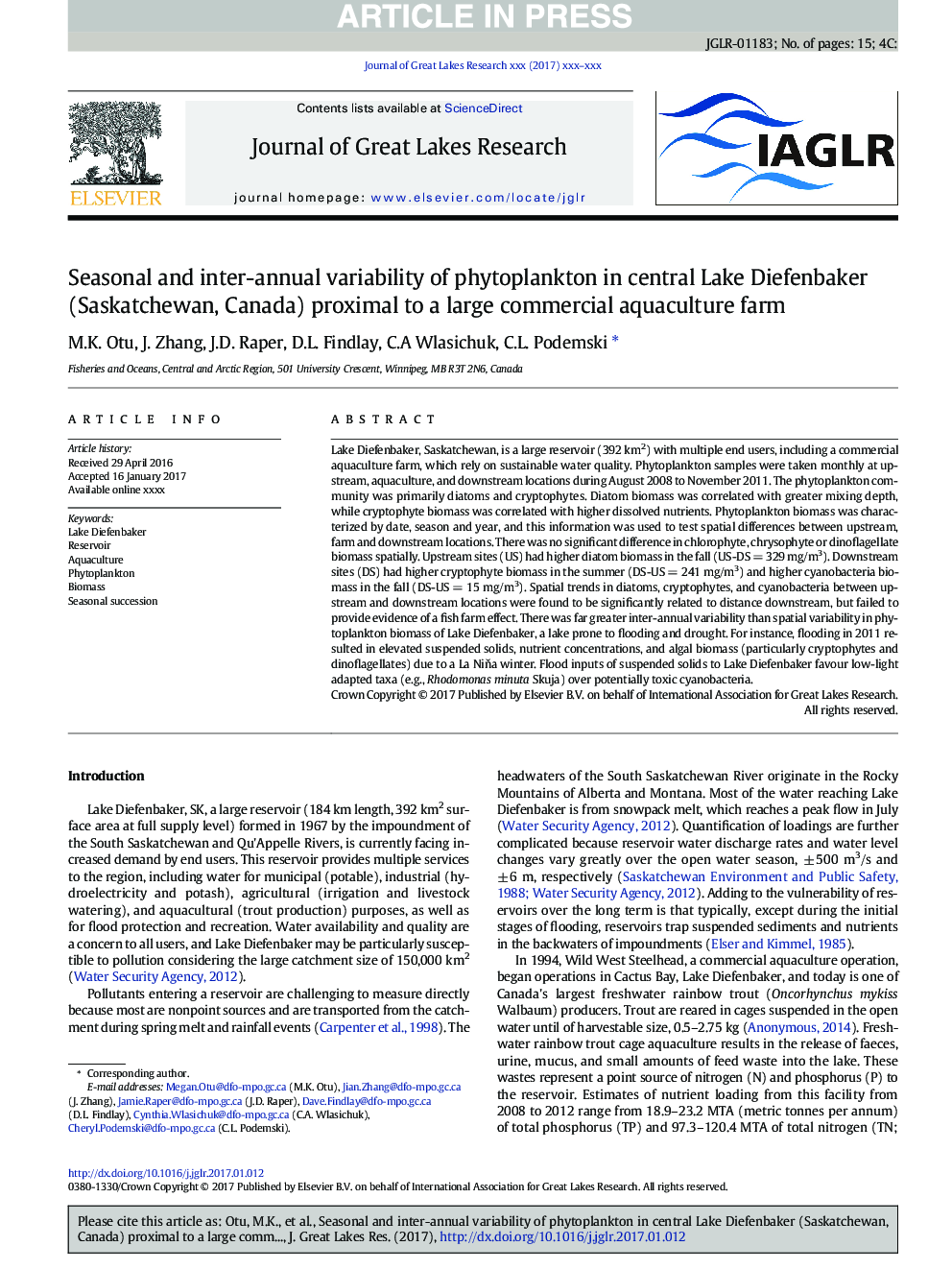| Article ID | Journal | Published Year | Pages | File Type |
|---|---|---|---|---|
| 5744724 | Journal of Great Lakes Research | 2017 | 15 Pages |
Abstract
Lake Diefenbaker, Saskatchewan, is a large reservoir (392Â km2) with multiple end users, including a commercial aquaculture farm, which rely on sustainable water quality. Phytoplankton samples were taken monthly at upstream, aquaculture, and downstream locations during August 2008 to November 2011. The phytoplankton community was primarily diatoms and cryptophytes. Diatom biomass was correlated with greater mixing depth, while cryptophyte biomass was correlated with higher dissolved nutrients. Phytoplankton biomass was characterized by date, season and year, and this information was used to test spatial differences between upstream, farm and downstream locations. There was no significant difference in chlorophyte, chrysophyte or dinoflagellate biomass spatially. Upstream sites (US) had higher diatom biomass in the fall (US-DSÂ =Â 329Â mg/m3). Downstream sites (DS) had higher cryptophyte biomass in the summer (DS-USÂ =Â 241Â mg/m3) and higher cyanobacteria biomass in the fall (DS-USÂ =Â 15Â mg/m3). Spatial trends in diatoms, cryptophytes, and cyanobacteria between upstream and downstream locations were found to be significantly related to distance downstream, but failed to provide evidence of a fish farm effect. There was far greater inter-annual variability than spatial variability in phytoplankton biomass of Lake Diefenbaker, a lake prone to flooding and drought. For instance, flooding in 2011 resulted in elevated suspended solids, nutrient concentrations, and algal biomass (particularly cryptophytes and dinoflagellates) due to a La NiÅa winter. Flood inputs of suspended solids to Lake Diefenbaker favour low-light adapted taxa (e.g., Rhodomonas minuta Skuja) over potentially toxic cyanobacteria.
Related Topics
Physical Sciences and Engineering
Earth and Planetary Sciences
Earth and Planetary Sciences (General)
Authors
M.K. Otu, J. Zhang, J.D. Raper, D.L. Findlay, C.A Wlasichuk, C.L. Podemski,
